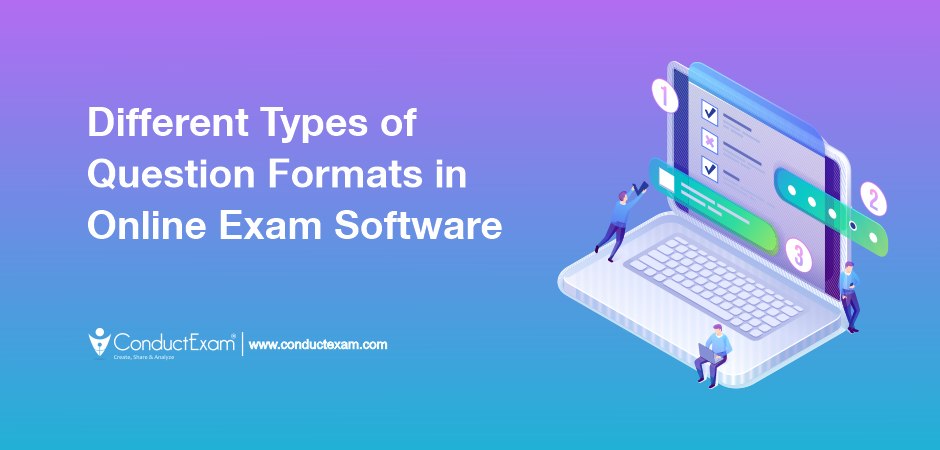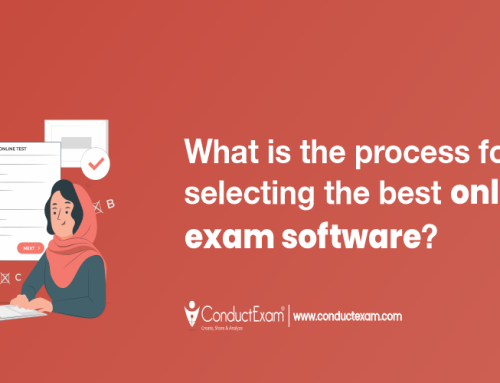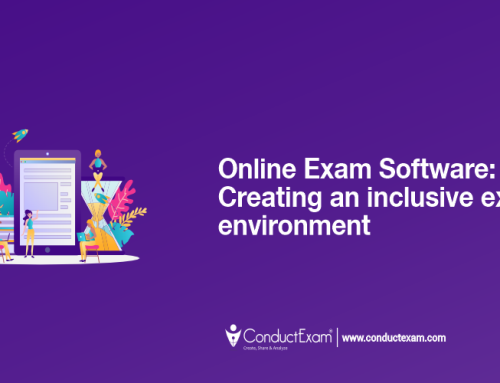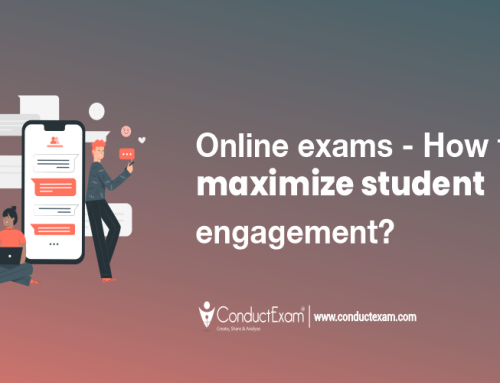Introduction
With the revolution of online exam software, taking exams with different types of questions has become a trend. Different institutes do have not the same approach for taking online exams. It creates a need for different types of question format day by day.
Over time, institutes of UPSC(Union Public Service Commission), SPSC (State Public Service Commission), JEE, and NEET need more advanced types of questions to get at level with the main exams. This is where the online-exam-software features generate different types of questions.
Also Read: How to Implement Question Paper Generator Software in Schools?
In this blog, we will see the different types of question formats used by online exam software. What are the advantages of every question format.
Here is the List of question formats in the Online Exam Software
1) Multiple Choice Question (MCQ)
When you heard about the online exam the first thing that comes to mind is MCQ. Yes, when MCQ was first implemented in the year 1982. Everybody was saying that it was not going to implement in every field. Off-course that statement has gone wrong and now MCQ is part of every exam-oriented work. From taking school examinations to the virtual hiring process.
With ConductExam’s online exam software, you can add questions that have the feature of MCQ.
Benefits of MCQ-based format:
- It allows for quick and objective evaluation.
- This method is efficient for assessing knowledge recall and understanding fastly
- It provides a wide range of topics to cover in a short period.
- Reduces the chance of guessing the correct answer (because of 4 options so probability of the answer will be 25%)
2) Descriptive questions
Question or exam difficulties increase with descriptive questions. Security of examination also increases with these types of questions. Students who want to cheat can not do here because of their lengthy answers. Institutes can prevent cheating in exams with online proctoring software.
Benefits:
- It examines the student’s critical thinking and analytical skills.
- This method promotes comprehension, reasoning, and communication abilities.
- It would encourage students to express their thoughts and ideas in a coherent manner.
3) Match the following
This question format involves matching items from two or more columns based on their associations or relationships. In 2023, UPSC implemented the toughest match of the following question in their prelims exam.
From the above question you can see it is the new level for the match of the following and it is extremely difficult to answer.
Benefits:
- This method tests the ability to establish connections and logical reasoning of students
- It evaluates knowledge of concepts and the relationships between them.
- It helps students to have systematic thinking and problem-solving skills.
4) Fill in the blanks
Fill in the blanks questions present a sentence or a paragraph with certain words or phrases missing, and students must fill in the appropriate answers.
Benefits:
- Assesses comprehension and application of knowledge.
- It tests the vocab, grammar, and contextual understanding of the candidate.
- It requires attention to detail and precision.
- This method is helpful for both subjective and objective evaluation.
5) True-False
This type of question requires students to determine whether a statement is true or false.
Benefits:
- It provides a quick and straightforward assessment method.
- This is fast learning question and evaluates knowledge recall.
- This method can identify misconceptions or gaps in knowledge.
6) Image-based Questions
Image questions include visual elements such as diagrams, graphs, or charts, accompanied by relevant questions. This type of question format is used in the primary section exams. Students can easily integrate with this system. They just have to show visual graphics and answer the question, it gets multiple benefits like:
Benefits:
- It evaluates the visual interpretation skills of any children or students.
- It checks critical thinking and inference-making abilities.
- Allows for a more engaging and interactive assessment experience
7) Video-based Questions
In ConductExam’s web-based online exam software teachers or tutors can add the video-based question for the students. It involves presenting a video clip or animation followed by questions related to the content.
Benefits:
- It tests the observational and interpretational skills of the student.
- Provides a dynamic and interactive assessment experience.
- This type of method increases students’ engagement with multimedia content.
Conclusion
ConductExam’s Online Exam Software offers all these question formats with user-friendly features. Also, ConductExam provides Question Paper Generator software that completes question generation more effectively. It provides these features to cater for the different assessment needs and learning objectives of different institutes. By incorporating these question formats tutor or teacher can also evaluate the student with personalized learning. Which is the main part of the Online Exam Software Trends 2023. Each format has its unique benefits and contributes to a comprehensive evaluation process.
FAQs
1) What are the 5 most commonly used test formats?
Here are the top 5 commonly used question exam formats.
- Multiple Choice Questions (MCQs)
- True-False Questions
- Fill in the Blanks
- Matching Questions
- Descriptive Questions
2) What are the types of objective questions?
The benefits of different types of question formats:
- Quick evaluation
- Critical thinking
- Logical reasoning
- comprehension-efficient
- Relationship analysis






Leave A Comment